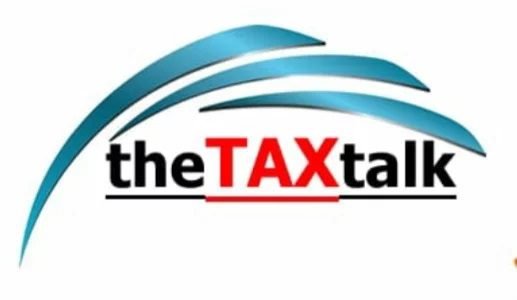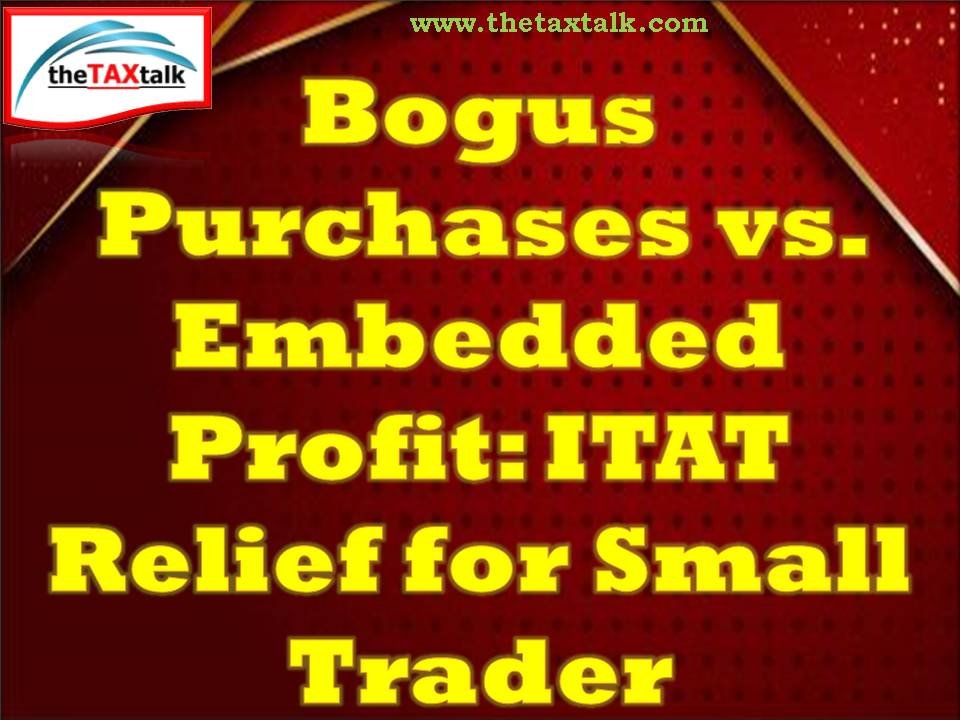![]()
Bogus Purchases vs. Embedded Profit: ITAT Relief for Small Trader
Ahmedabad Tribunal Says “Don’t Disallow the Whole, Just the Profitable Part!”
In a recent landmark ruling, the Ahmedabad Bench of the Income Tax Appellate Tribunal (ITAT) offered major relief to a small trader, Ramjibhai Kesaraji Patel, by drastically reducing a ₹15.28 lakh addition made by the Assessing Officer (AO) on account of alleged bogus purchases. The Tribunal held that even if the purchases were from suspicious parties, only the profit element embedded in such purchases can be taxed-not the entire amount.
Background: What Triggered the Case?
Ramjibhai, a small businessman from Vadodara, declared an income of ₹4.96 lakh for AY 2018–19. However, during reassessment proceedings, the AO reopened the case and added ₹15.28 lakh to his income under Section 69C, alleging bogus purchases from three entities:
| Date | Amount (₹) | Credited to |
| 23.06.2017 | 2,68,611 | Raghav Traders |
| 23.06.2017 | 3,33,715 | Helly Enterprises |
| 23.06.2017 | 1,38,818 | Laxmiraj Enterprises |
| 11.08.2017 | 3,07,500 | Laxmiraj Enterprises |
| 16.10.2017 | 4,80,000 | Laxmiraj Enterprises |
| Total | 15,28,644 |
The AO took the extreme step of adding the full amount of purchases to income, citing the suppliers as “entry providers.” The First Appellate Authority (NFAC) didn’t even get into the merits-dismissing the appeal outright citing delay in filing.
Before the ITAT: Battle for Justice
The assessee, represented by Shri Prashant Upadhyay, argued that:
• All purchases were genuineand backed by:
The copy of the order is as under:
-
- VAT-compliant invoices
- Bank payments
- Audited books of account
• The AO never doubted sales, which were linked to these very purchases.
• Thus, disallowing the entire purchase amountwas unjust and against judicial principles.
As an alternative, the AR requested that if the purchases are still viewed suspiciously, only a small profit percentage should be added-consistent with judicial precedents.
Tribunal’s Verdict: Reason Over Rhetoric
The Tribunal, after analyzing all records and case law, noted:
• The AO accepted sales.
• The payments were made through banking channels.
• VAT invoices and audit reports existed.
• No independent inquirywas conducted by the AO against the suppliers.
The Tribunal cited a series of judgments including:
• CIT v. Sheth – Profit rate capped at 12.5%
• CIT v. Surya Impex– Only 6% of purchases disallowed
• CIT v. Jigisha Mehta– Just 5% disallowed when no inquiry done
Final Relief: Disallowance Limited to 8%
Considering the facts and prevailing jurisprudence, the ITAT restricted the disallowance to just 8% of the total purchases, i.e., around ₹1.22 lakh instead of ₹15.28 lakh.
Why This Matters
This decision reinforces a crucial principle: Suspected bogus purchases don’t mean entire disallowance. If sales are not disputed and purchases are backed by some documentary evidence-even if the supplier is questionable-only the profit margin embedded in such purchases can be added.
Takeaway for Taxpayers and Practitioners
• Always maintain bank records and VAT/GST invoicesto support purchases.
• Sales consistency can be a strong defense.
• File appeals within timeto avoid technical dismissals.
• Use judicial precedents to argue for reasonable estimation, not blanket disallowance.
For more updates on ITAT rulings, stay tuned to your trusted tax platform.
Original Case: ITA No. 827/Ahd/2025, Pronounced on 17.07.2025
The copy of the order is as under:


